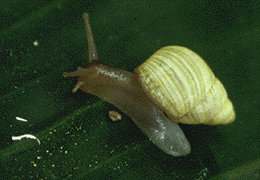
The International Union for Conservation of Nature (IUCN) Red List of Threatened Species, founded in 1964, is the world's most comprehensive inventory of the global conservation status of biological species. It uses a set of criteria to evaluate the extinction risk of thousands of species and subspecies. These criteria are relevant to all species and all regions of the world. With its strong scientific base, the IUCN Red List is recognized as the most authoritative guide to the status of biological diversity. A series of Regional Red Lists are produced by countries or organizations, which assess the risk of extinction to species within a political management unit.

The conservation status of a group of organisms indicates whether the group still exists and how likely the group is to become extinct in the near future. Many factors are taken into account when assessing conservation status: not simply the number of individuals remaining, but the overall increase or decrease in the population over time, breeding success rates, and known threats. Various systems of conservation status exist and are in use at international, multi-country, national and local levels as well as for consumer use.

The black partridge, also known as the black wood partridge, is a small partridge with a thick bill, grey legs and dark brown iris. It is the only member of the monotypic genus Melanoperdix.

Functional extinction is the extinction of a species or other taxon such that:
- It disappears from the fossil record, or historic reports of its existence cease;
- The reduced population no longer plays a significant role in ecosystem function; or
- The population is no longer viable. There are no individuals able to reproduce, or the small population of breeding individuals will not be able to sustain itself due to inbreeding depression and genetic drift, which leads to a loss of fitness.

A species that is extinct in the wild (EW) is one that has been categorized by the International Union for Conservation of Nature as known only by living members kept in captivity or as a naturalized population outside its historic range due to massive habitat loss.
This timeline of extinctions is an historical account of species that have become extinct during the time that modern humans have occupied the Earth.
Glyphoglossus flavus is a species of frog in the family Microhylidae. It is endemic to Borneo and is known from the Gunung Mulu National Park in Sarawak (Malaysia), Danum Valley Conservation Area in Sabah (Malaysia), and Ulu Temburong National Park in Brunei. Common names Borneo squat frog and yellow burrowing frog have been coined for it.

Limnonectes ingeri is a species of frog in the family Dicroglossidae. It is found in Borneo . Its natural habitats are tropical moist lowland forests, rivers, and swamps. It is probably seriously affected by habitat loss, and locally also by collection for food.
The Malesian frog, Malaysian river frog, Malaysian peat frog, or peat swamp frog is a species of frog in the family Dicroglossidae. It is found on the Malay Peninsula, Sumatra, Java, Borneo, and a range of islands on the Sunda Shelf . Its natural habitats are shallow, gentle streams and nearby swampy areas including peat swamps, very flat alluvial forests, and overgrown plantations. It is becoming rare due to habitat loss (deforestation), and to a lesser extent, exploitation.
The lesser pygmy flying squirrel is a species of rodent in the family Sciuridae. It is endemic to Malaysia.
The Lake Pedder earthworm is an extinct earthworm species in the family Megascolecidae. Its genus Hypolimnus is monotypic.

Begonia salaziensis is a species of plant in the family Begoniaceae. It is endemic to Mauritius. Its natural habitat is subtropical or tropical dry forests.

Partula is a genus of air-breathing tropical land snails, terrestrial pulmonate gastropod mollusks in the family Partulidae. Many species of Partula are known under the general common names "Polynesian tree snail" and "Moorean viviparous tree snail". Partulids are distributed across 5,000 sq mi (13,000 km2) of Pacific Ocean islands, from the Society Islands to New Guinea.
Begonia aequilateralis Irmsch., 1929 is a species of begonia known only from the Sungai Buloh area of Selangor, Peninsular Malaysia.
Chionanthus polygamus is a tree in the family Oleaceae. The specific epithet polygamus refers to the tree having both unisexual and bisexual flowers.
Azadirachta excelsa, commonly known as sentang, is a tree in the mahogany family Meliaceae. The specific epithet excelsa is from the Latin meaning "lofty".
Dysoxylum alliaceum is a tree in the family Meliaceae. The specific epithet alliaceum is from the Latin meaning "onion-like", referring to the smell of the inner bark.

Xylocarpus moluccensis is a tree in the family Meliaceae. It is named for the Moluccas archipelago.







